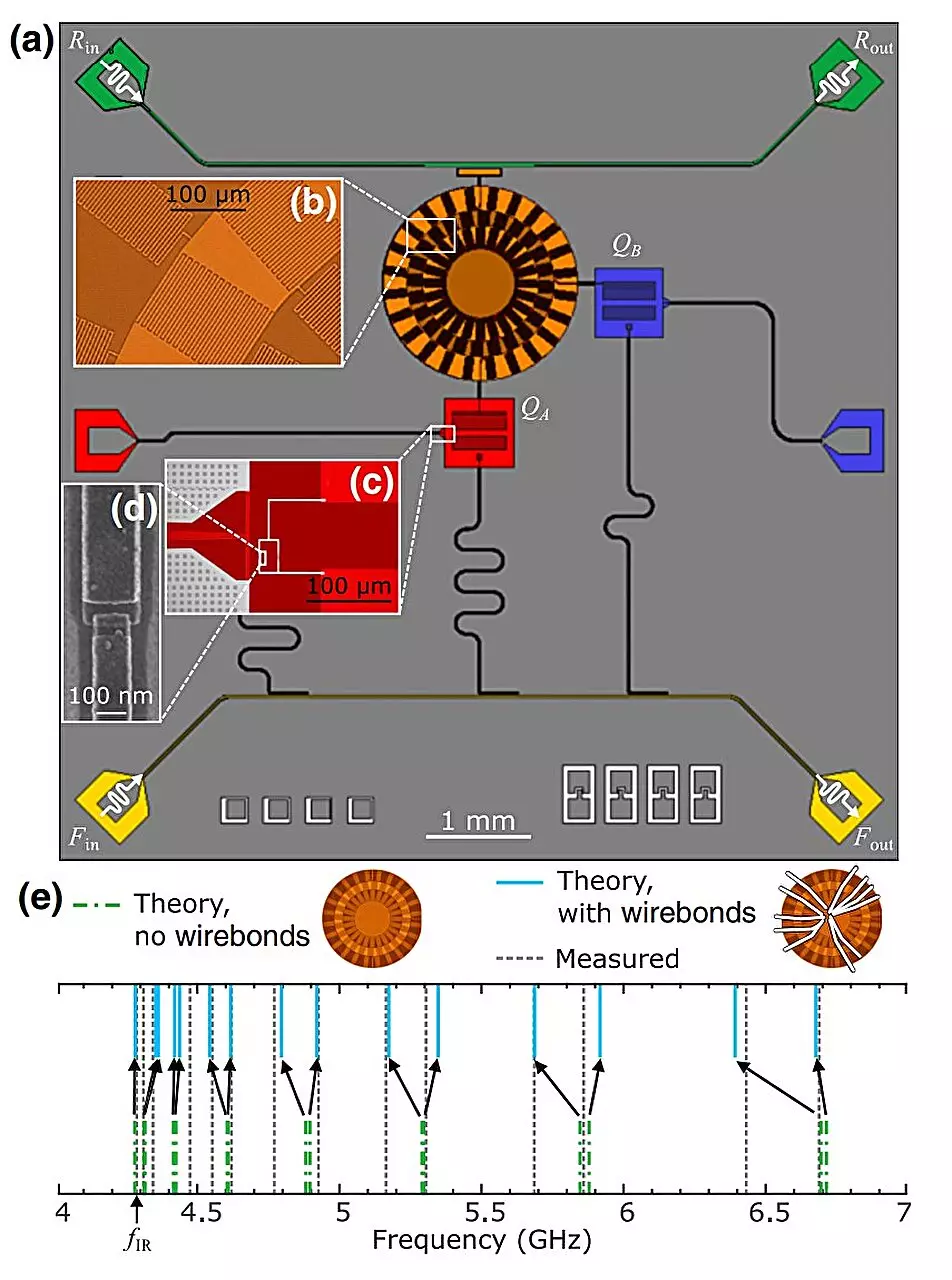As the realm of quantum computing races toward unprecedented capabilities, the intricate challenge of achieving fault-tolerant quantum processors looms large. At the heart of this ambition lies the generation of entanglement through the coupling of qubits. Superconducting qubits have emerged as frontline contenders for quantum information processing, yet the drive to scale these systems to a full-fledged quantum computer reveals significant hurdles. Traditional coupling methods often restrict interactions to nearest neighbors and come laden with drawbacks, including cumbersome physical requirements and the necessity for numerous couplers. For example, connecting 100 qubits in pairs demands an unmanageable volume of couplers, leading to complications in fabrication and logistics.
Moreover, the logistical nightmare expands dramatically when considering thousands of qubits. The daunting prospect of individually controlling these circuit elements through countless cables not only challenges practical implementation but threatens to congest any sizable laboratory space. Therefore, the quest for more efficient and scalable coupling strategies becomes paramount for the realization of robust quantum architectures.
A Groundbreaking Multimode Coupler
In a striking advancement, a team of theoretical physicists, guided by Mohd Ansari at Forschungszentrum Jülich, in tandem with Britton Plourde’s experimental group at Syracuse University, proposes a visionary solution: a multimode coupler that allows for tunable coupling strength between any two qubits. This innovative approach, recently published in PRX Quantum, leverages a unique design—a ring-shaped coupler fashioned from metamaterial transmission lines. This structure is not just a technical curiosity; it represents a paradigm shift in how we think about qubit interactions.
The ring resonator features a dense frequency spectrum of standing-wave resonances that coincide with the operational frequency range of qubits. Such a versatile design allows qubits positioned at strategic points within the ring—specifically the 3 and 6 o’clock positions—to effectively couple to the standing waves. The coupling strength is intricately connected to the amplitude of these standing waves at their respective locations. This implies a remarkable adaptability that enables quantum interactions to be finely tuned to suit a variety of operational needs and scenarios.
Innovative Mechanics in Quantum Coupling
What sets this multimode coupler apart from conventional approaches is its unique interplay between the qubits and the standing waves. The coupling dynamics induce transverse exchange interactions, influenced by each qubit’s detuning with various resonant modes. This intricate dance opens up the door to both positive and negative interactions, introducing a rich tapestry of potential states. Furthermore, the interactions extending to higher excited states of each qubit and the coupling modes culminate in higher-order ZZ interactions, which also fluctuate depending on qubit detuning.
Remarkably, this designed flexibility aligns with theoretical models, enabling entangling energy scales to be modulated from substantial values down to nil. Thus, the capability to extend the system and incorporate more than two qubits around the ring presents a formidable platform for orchestrating entanglement within larger qubit arrays. This advancement heralds a new era in quantum control, potentially allowing for more sophisticated quantum algorithms than previously imaginable.
Implications for Future Innovations
The implications of this research stretch far beyond academic curiosity. As quantum computing moves towards integrating with mainstream technologies, these multimode couplers could become the cornerstone of future quantum networks, where high connectivity and low error rates are essential. Enhanced control over qubit interactions signifies a dramatic leap in quantum processors, with the promise of systems that are not only scalable but also more resilient against errors that have historically plagued quantum computing endeavors.
In essence, the introduction of such innovative coupling methods embodies a significant stride in turning theoretical advances into practical applications. The future of quantum technology is ripe with possibilities, and as researchers like Ansari and Plourde continue to refine these foundational elements, we edge closer to harnessing the full power of quantum mechanics for transformative computational capabilities. The journey toward a real quantum computing revolution is underway, and it begins with robust coupling strategies that promise unparalleled efficiency and control.

